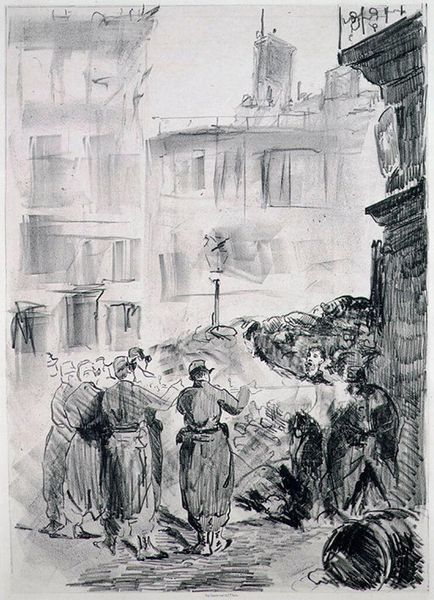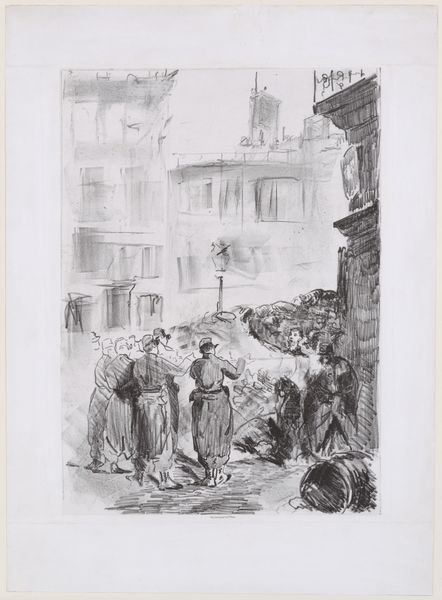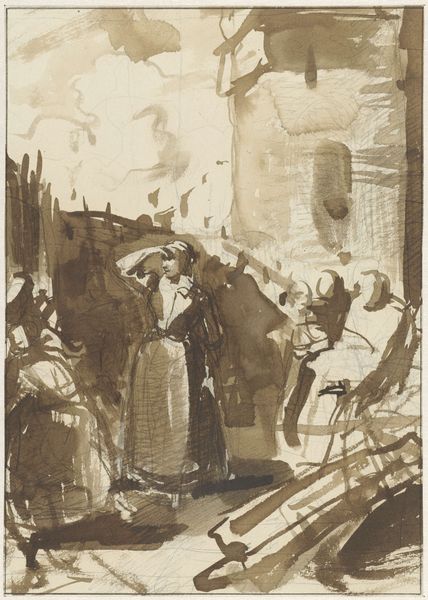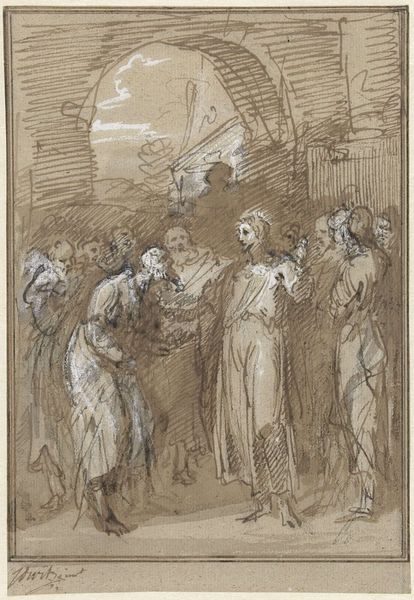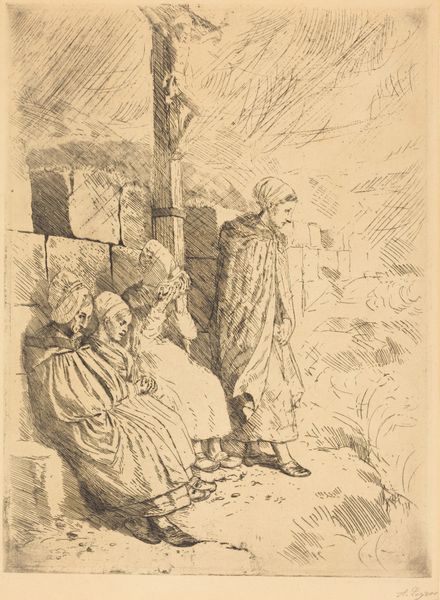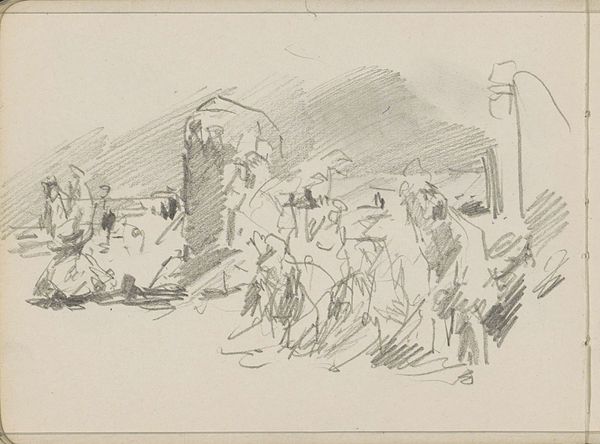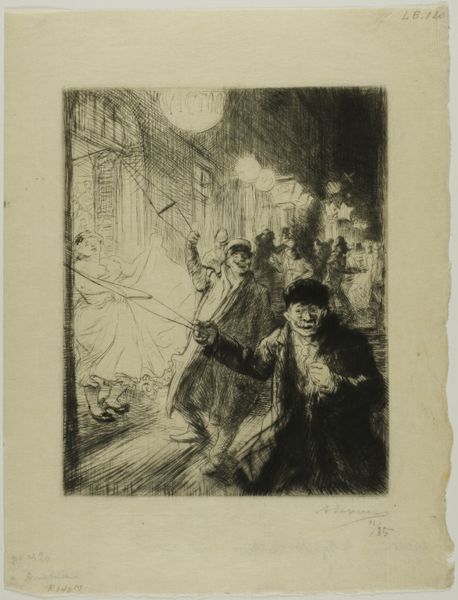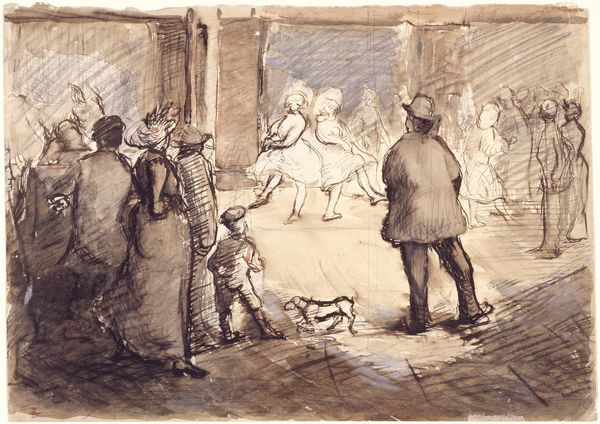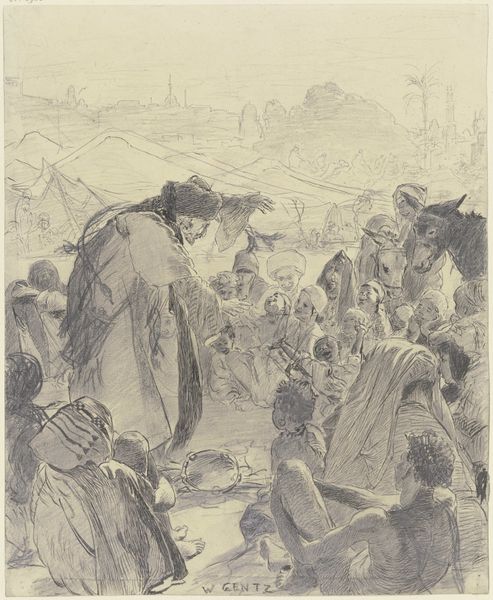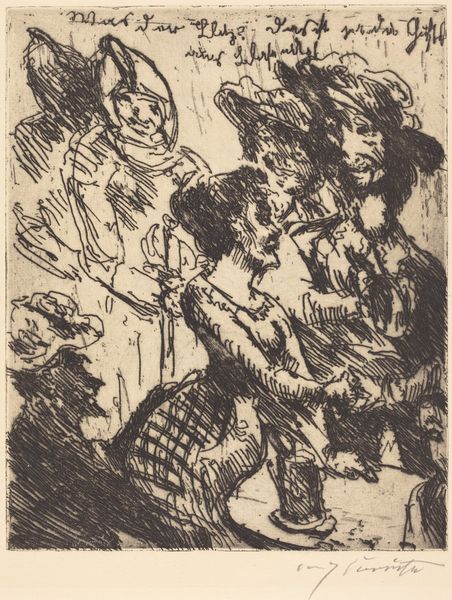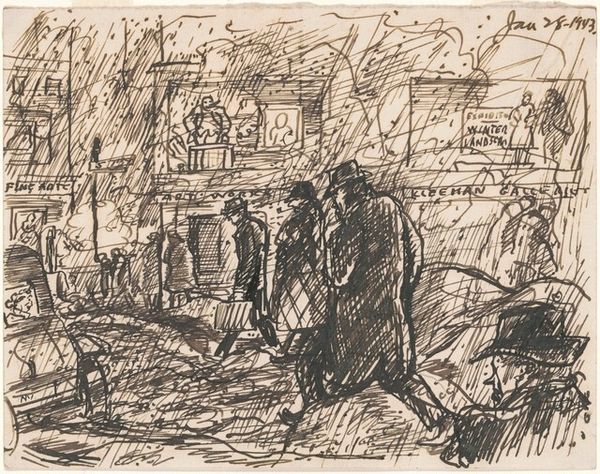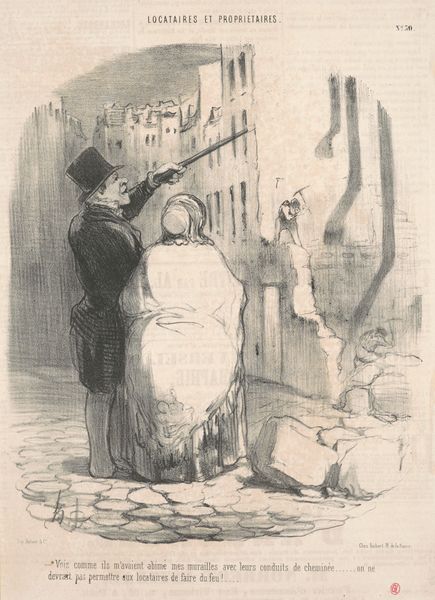
drawing, lithograph, print, ink, pencil
#
portrait
#
drawing
#
ink drawing
#
lithograph
# print
#
pen sketch
#
figuration
#
ink
#
group-portraits
#
pencil
#
line
#
cityscape
#
history-painting
#
realism
Dimensions: 464 mm (height) x 334 mm (width) (billedmaal)
Editor: Here we have Manet’s "The Barricade", created in 1871 using lithography. It's a rather stark and grim scene. What immediately grabs my attention is the strong contrast between the crisp lines of the figures on the left and the more chaotic, almost smudged, depiction of the execution taking place. How do you interpret this work through the lens of its visual composition? Curator: Formally, observe how Manet uses stark lines and contrasting shades to create depth and drama. The linear perspective, though subtly rendered, draws the viewer's eye towards the center, emphasizing the brutal act. Consider the orientation of figures to geometric planes, contributing to a clear foreground, transitioning from clarity on the left toward obscuration on the right. The repetition of vertical lines formed by the architecture, in juxtaposition with diagonals of prone figures contributes to the image's discordant dynamism. What emotional effect do these structural choices achieve? Editor: I think the repetition definitely creates a sense of oppression, and the chaotic right side sort of explodes that feeling. The obscured part conveys disorder. Does that tie into a semiotic analysis of this work? Curator: Indeed. One could argue that the linear perspective guides the eye—inviting interrogation into what happened, followed by obfuscation—revealing limited and slanted vantage, thus creating uncertainty. A clear perspective becomes obscured through the drawing itself. The line work shows form breaking down from representation. Semiotically, the arrangement becomes unstable as reality turns to violence, which degrades vision in the image itself. What does it do to your reading? Editor: Seeing how the art structures visibility is impactful! That kind of makes the chaos understandable, reflecting turmoil. The clean depiction of executioners offers a counterpoint—clear authority against messy humanity. I never really considered line as language! Curator: Precisely! By analysing form, you can arrive at its meaning. Every element—the contrast, the line, the structure itself—contributes to the complex semiotics, which adds another way of seeing Manet’s message and visuality in that piece.
Comments
No comments
Be the first to comment and join the conversation on the ultimate creative platform.
